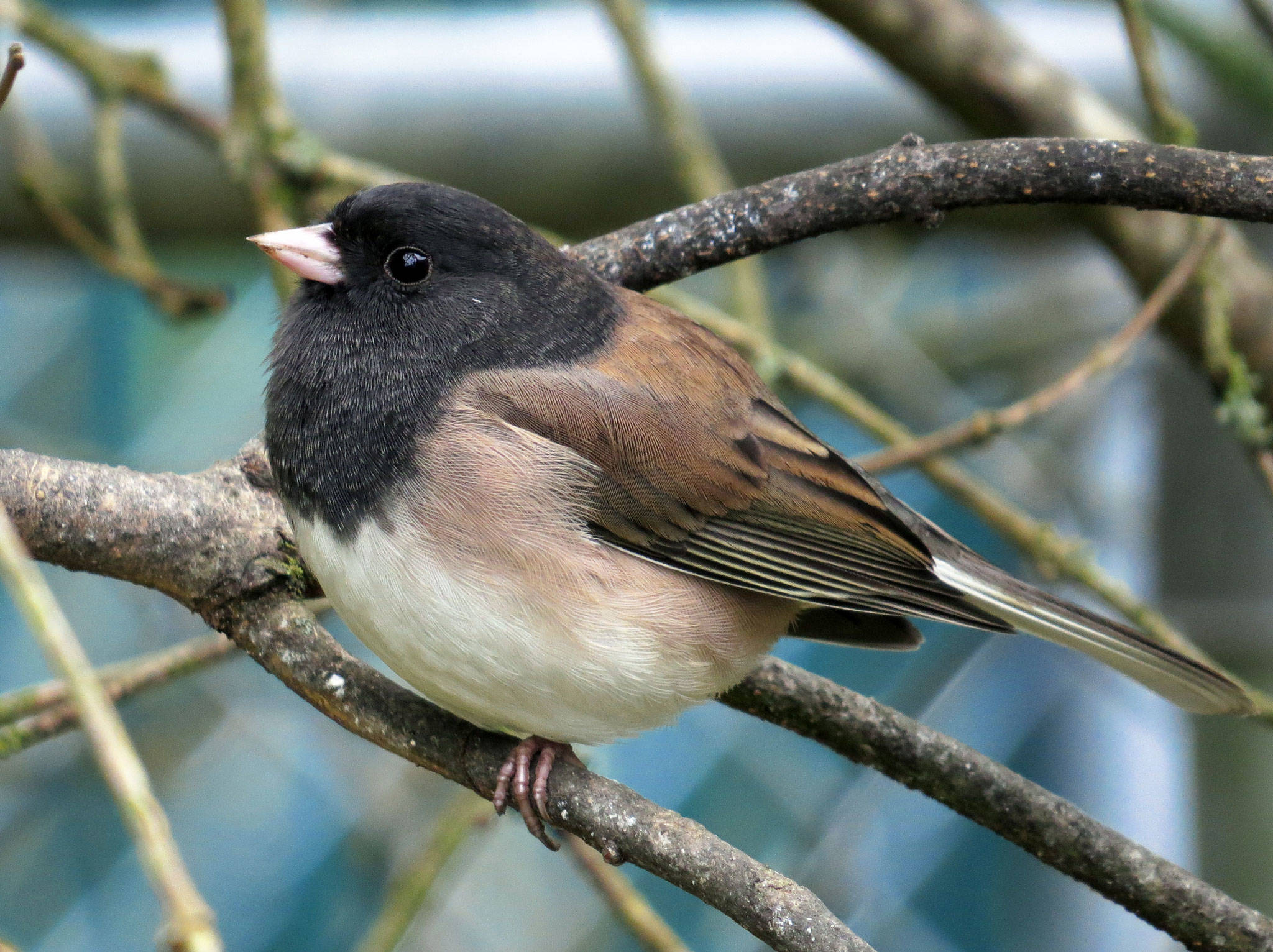Chances are if you look outside today you will see a Dark-eyed Junco, either scratching around in the dirt, under or near the feeders, or on a feeder. It is one of the more common yard birds to be found in North America, from northern Alaska through northern Mexico. The Oregon form, shown here in Mike Hamilton’s photo, is the more common in the state…and yes, they are cute.
General Description: The Junco is a small, sturdy sparrow with white outer tail feathers they flash when flying, a dark head in the male Oregon form and paler dark head in females and juveniles, a stout pinkish-yellow bill, streaked brown back, buffy sides, gray wings, and a white breast. They are 5.5 to 6.3 inches long, with a wingspan of 7.1 to 9.8 inches, and weigh approximately 0.6 to 1.1 ounces.
Habitat: Juncos overwinter here in our yards and open woodlands, preferring a treed habitat with lots of understory bushiness for protection. They are very common around our feeders, either on them or under them, and allow close views if you stand still a while. During breeding season they move into moist woodlands with open spaces and dense understory.
Behavior: In winter, Dark-eyed Juncos form large flocks with a distinct social hierarchy; the earlier birds on territory are at the top of the order and the males readily defend their territories with tail flashing and posturing. They feed in groups on the ground with other sparrows, scratching in the dirt or flying into brush to glean insects off leaves and branches.
Diet: Juncos eat about half insect and other arthropods and half seeds in the summer, then switch to mostly seeds and berries in the winter. Juvenile birds need the protein from insects and arthropods to develop.
Nesting: Female Juncos choose the nest location and build nests on the ground, in exposed roots of trees that topple, on porch lights, under or in buildings, hanging flower pots, and even on rock faces. Usually a small depression on the ground is the starting point and it is lined with soft grasses, woven by the female to fit her body as she sits in the nest with a base of twigs, leaves and moss. She incubates three to five eggs for 11 to 13 days, then both parents feed the young until they leave the nest in 9 to 11 days. The pair may raise a second brood.
Migration: Most Junco’s follow the food supply south, but many overwinter if food is plentiful, a great reason to keep those feeders full. There are also many that migrate between higher elevations in the summer and the lowlands the rest of the year.
Conservation Status: A recent study determined there is a total population of approximately 630 million individuals, so this is a very healthy species.
When and Where to Find in Grays Harbor: Junco’s can be found almost anywhere in the area; just hang a feeder and watch for them in your own yard, or check out the nearest park. They prefer the edges of brush and dirt where they can scratch around in the leaf litter but have quick access to safety in the overhanging brush. Watch for the flash of white on their tails.


